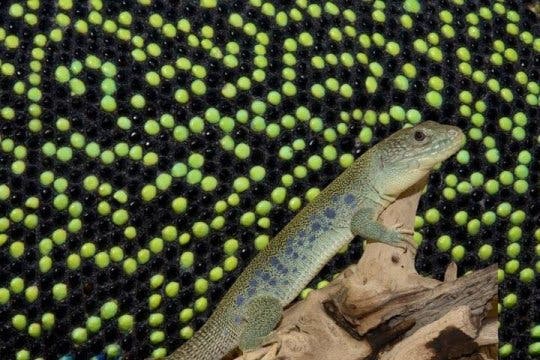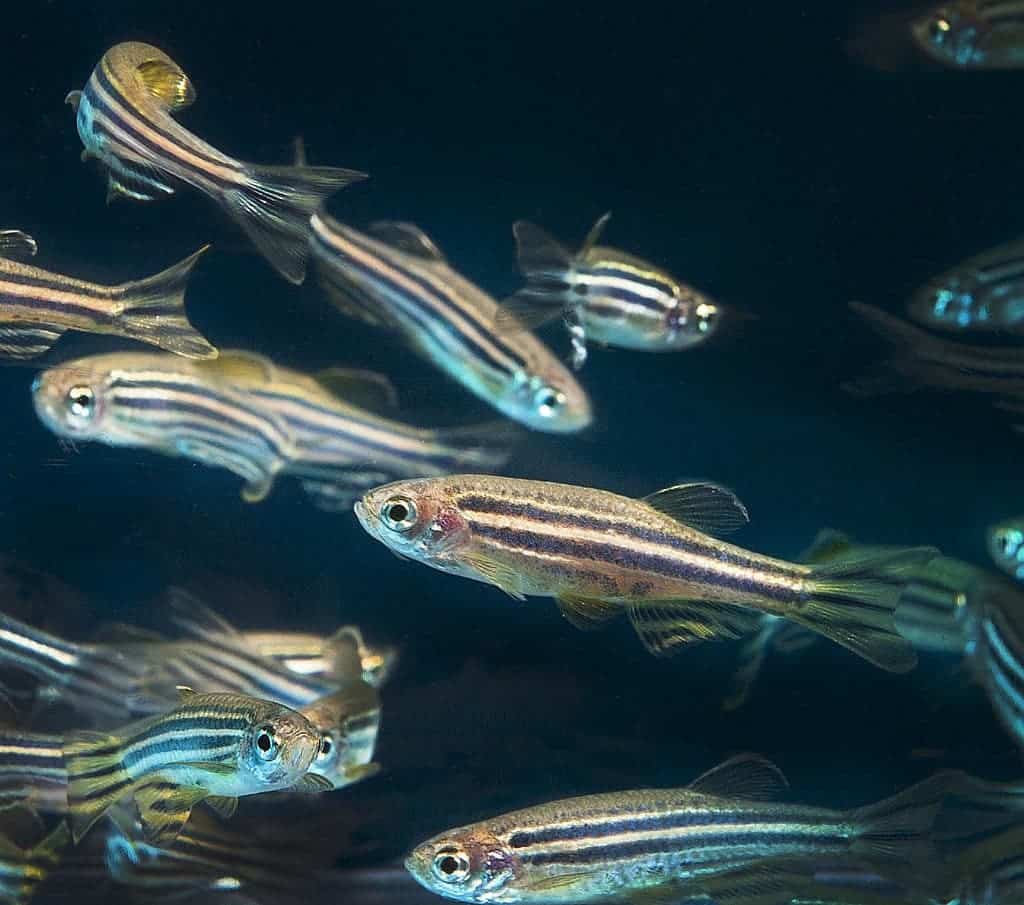When you think about math, it often seems like an abstract concept that doesn’t connect to the real world. Actually, some patterns in animals can be explained by mathematical equations. Turing equations explain how many animals get certain coloured stripes or spots on a cellular level. The ocellated lizard’s (Timon lepidus) scale colours do not follow the Turing equations and are instead determined by the colour of their neighbouring cell. However, it turns that the Turing equations still do apply on a smaller level.
Changing scales
Researchers at the University of Geneva (UNIGE), Switzerland, and SIB Swiss Institute of Bioinformatics looked at how the ocellated lizard’s scales form their intricate patterns. The researchers took photos of the backs of three male lizards, from when they were 2 weeks old up to when they were 3 or 4 years old. Using the images, the researchers tracked the fate of approximately 5,000 hexagonal scales on their backs.

As the lizards age, their scales change from brown with white spots to an intricate green and black pattern. The scales change colour one by one. About 1,500 scales changed colour in total per lizard. The researchers noticed something odd, some scales switched between the green and black colours multiple times. It turns out that the scales get their colour depending on the colour of their neighbour. In the end, each green scale had four black and two green neighbouring cells. In contrast, each black cell had three black and three green neighbours. This pattern, taking into account the colour of the neighbour, follows cellular automation, a concept in computer science.
To Turing or not to Turing
Cellular automation was invented by the mathematician John von Neumann in 1948. In cellular automation, units change their state depending on their neighbour, here a scale is a unit. The scales change colours depending on the colour of the scale next to them. In contrast, Alan Turing’s equations, discovered in 1952, involve microscopic interactions among coloured cells. Turing equations determine colour independently of any skin feature such as a hair or scale.

But why don’t the lizards’ patterns follow the Turing equations as most other animals do? The scales themselves are clear but the colour of the underlying skin determines the colour of the scale, black or green. The skin under the scales is thick and there’s lots of space for the cells to interact. However, between scales, the skin is thin and there’s not so much room for interaction. The colour is limited to the scale-level, as opposed to the cell-level. In this case, 3D geometric skin features like these can interrupt a Turing pattern.
“But when you can show that there are general mathematical principles that can describe biological processes it provides a nice conceptual framework to understand what’s happening,” says Devi Stuart-Fox, an evolutionary biologist at the University of Melbourne in Australia.
In this lizard species, both Turing equations and cellular automation are actually at work determining the scale colour. This scientific discovery connects two well-known mathematic concepts. It is proof that math is not just restricted to the books!
Journal reference: et al. A living mesoscopic cellular automaton made of skin scales. Nature http://dx.doi.org/10.1038.nature22031 (2017).






